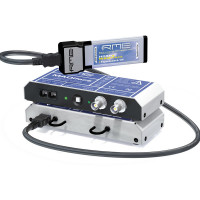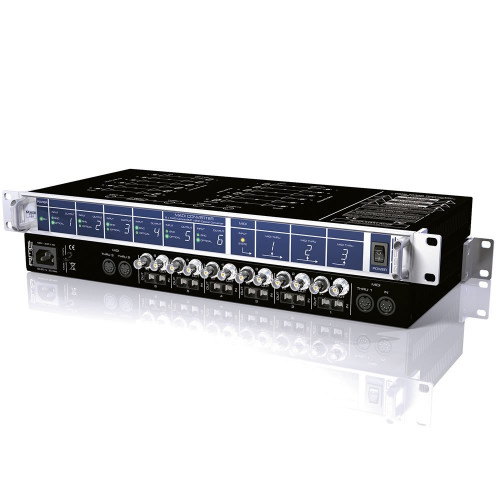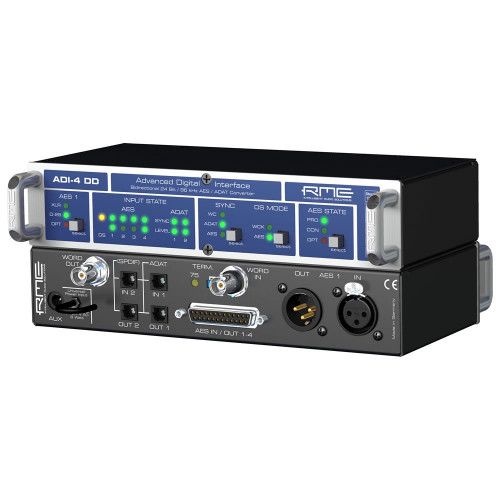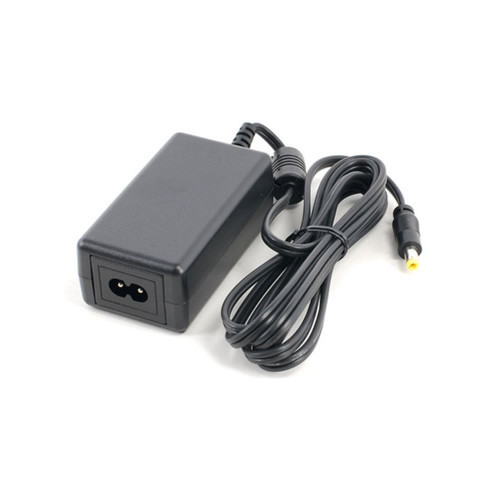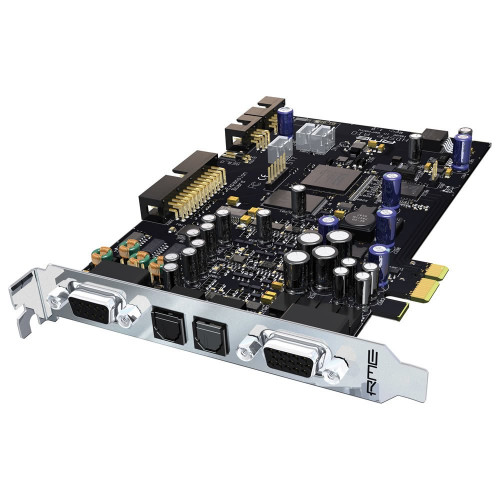RME HDSPe MADIface (Discontinued)
Please note that this product has been discontinued.
For the latest version see the RME MADIface USB
128-Channel 192 kHz MADI PCI ExpressCard For Notebook Computers
- ExpressCard/34 Interface
- 64 Input channels / 64 output channels
- 1 x MADI I/O (optical and coaxial)
- TotalMix
- No external power supply required
Description
Overview
Current laptops offer calculation power on par with fast desktop systems. Dual core processors, 2 Gigabyte RAM, big and fast hard drives, dual monitor operation with a quick graphics card - today all this is also available small, lightweight and portable. No wonder that RME receives more and more requests for a portable MADI solution. Thanks to the fast PCI Express bus and the latest, extremely powerful FPGAs, RME is proud to present another milestone in the company's history - the world's first and only MADI interface for laptops, based on an ExpressCard: the MADIface!
Consisting of the HDSPe ExpressCard MADI and a small breakout box, the MADIface offers full MADI power: 64 channels input and 64 channels output, up to 192 kHz sample rate, in MADI embedded MIDI transmission, complete TotalMix that is even remote controllable and has all features of the 'bigger' HDSPe MADI, as well as lowest latency and CPU-load. To make the usage as comfortable as possible, the power for the breakout box is provided directly by the ExpressCard, so no external power supply is required.
The MADIface is fully compatible to all devices with MADI interface. Of course it can be used perfectly in combination with RME's own MADI series products. For example with the ADI-648 an 8 x ADAT optical PC interface is realized, unbeatable in price and performance. And with the ADI-6432 a bidirectional AES/EBU frontend with 64 channels is set up hassle-free.
Thanks to RME's flash update technology, future firmware improvements, adjustments, and bugfixes can be installed easily at any time.
The MADIface works with the Sonnett Echo ExpressCard Adapter on a Thunderbolt port (e. g. Macbook Pro, iMac).
Differences to HDSPe MADI
- No direct word clock I/O*
- No direct MIDI I/O**
- No analog monitor output
- No TCO support
Features
RMEs HDSPe ExpressCard MADI is a true PCI Express solution, which consequently takes full advantage of the new format, achieving significant performance gains in multitrack audio. The ExpressCard is built according to PCI Express Base Specification v 1.1. The connection between ExpressCard MADI and breakout box is established using ordinary firewire cable (IEEE 1394, 6-pin). However, the data transfer does not use FireWire protocol. The supplied cable is 1 m (3 ft.) long. The ExpressCard MADI serves as power supply for the breakout box, freeing you from the hassle of additional wall warts.
The MADIface offers full support for 56 and 64 channel modes and double and single wire technology (96k frame) for 96 kHz. Full 64 channel support can also be found in the hardware mixer TotalMix. All 64 inputs and 64 playback channels can be routed and mixed to 64 physical outputs completely freely, which translates to an 8192 channel mixer. With that, RME's MADI interfaces offer the most powerful router/mixer ever implemented on a PCIe card, and allow much more than a usage as pure computer I/O unit:
- MADI optical patchbay and router
- MADI coaxial/optical or vice versa converter and splitter
- MADI redistributor, patchbay and router
TotalMix can be completely remote controlled via MIDI. Furthermore, the hardware delivers RMS and peak level meters for full control over 192 audio channels at minimal CPU load.
RME uses a configuration memory for the most important settings of the card. Instead of operating in a default mode on computer power-up until loading the driver, MADIface activates the last used sample rate, master/slave configuration and MADI format immediately when switched on. This eliminates disturbing noises and clock network problems during power-up or re-boot of the computer.
* While many MADI-based devices require an additional word clock or AES line, the MADIface (like all RME devices) uses SteadyClock(TM) to extract the reference clock at lowest jitter directly from the MADI signal, making long-distance connections even more convenient. Although not available at the MADIface itself, word clock input and output are available when using another RME MADI device.
** MADIface offers a virtual MIDI port within the driver. Mainly intended for remote controlling further RME devices, it can also be used to send and receive usual MIDI data. The MIDI data are invisibly inserted into and transmitted by the MADI signal. Therefore a physical access is given at the RME interface connected to the MADIface.
Included software:
DIGICheck for Windows
Spectral Analyser, professional level meter for 2, 8, or 64 channels, Vector Audio Scope, Global record, various other audio analysis tools.
Drivers
Windows 2000/XP/Vista/64 (full ASIO multi-client operation of WDM, GSIF 2.0 and ASIO 2.0), Mac OS X Intel (Core Audio and Core MIDI).
Settings Dialog
Just click on the hammer symbol in the systray of the taskbar and the settings dialog of the MADIface comes up. The clear structured, easy to understand window plus the unique informative status windows for input signal, clock mode and sample rate make your work with the card to a real pleasure.
RME's exclusive SyncCheck checks the synchronous operation of the input signal to the internal clock. This technology helps to find errors immediately. The actual state of the input is displayed in the settings dialog.
MADIface is equipped with SteadyClock(TM), RME's unique sync and clock technology, turning the device into a sync reference for the whole studio. SteadyClock refreshes clock signals, removes jitter, and takes care of optimal AD/DA conversion quality, thus guarantees a sensational sound quality, completely independent from the reference clock's quality.
SteadyClock allows the MADIface to control the sample rate freely on its own. The DDS dialog includes a direct choice of the video and audio world's most often used sample rates. Additionally, two faders can be used to set the sample rate freely and in real-time, within the range of +/- 4% and +/- 0.4%.
Up to 3 MADIfaces and HDSPe Multiface/Digiface can be used simultaneously , in every possible combination (note that both the HDSPe Multiface and Digiface have since been discontinued). With this up to 192 inputs and 192 outputs are available at 48 kHz, 96 inputs and 96 outputs at 96 kHz. Please note that most laptops have only one PCI Express slot.
Specifications
- ExpressCard, 34 mm standard
- 1-Lane PCI Express Endpoint device (no PCI Express to PCI Bridge), revision 1.1
- 250 MB/s transfer rate per direction
- Secure BIOS Technology: card stays fully functional even when the flash process fails
- Output: IEEE 1394 connector, not compatible to FireWire
- All settings changeable in realtime
- Clock modes slave and master
- Automatic and intelligent master/slave clock control
- Sync sources: MADI coaxial, MADI optical, internal
- Varipitch: by input signal or word clock
- Sample rates: 44.1 kHz, 48 kHz, 88.2 kHz, 96 kHz, 176.4 kHz, 192 kHz, variable (Sync/DDS)
- Jitter: < 1 ns, internal and all inputs
- Jitter sensitivity: PLL operates even at 100 ns Jitter without problems
- Comes with DIGICheck: the ultimate measurement, analysis and test tool
- Package contents: ExpressCard MADI, breakout box, cable 1 meter (3 ft) IEEE 1394a, driver CD
- Connections Breakout Box
- Input MADI optical, MADI coaxial (BNC)
- Output MADI optical, MADI coaxial (BNC)
- MIDI input and output: via virtual MIDI port and MADI transmission
Product Reviews
Customer Reviews
This item currently has no reviews.
























